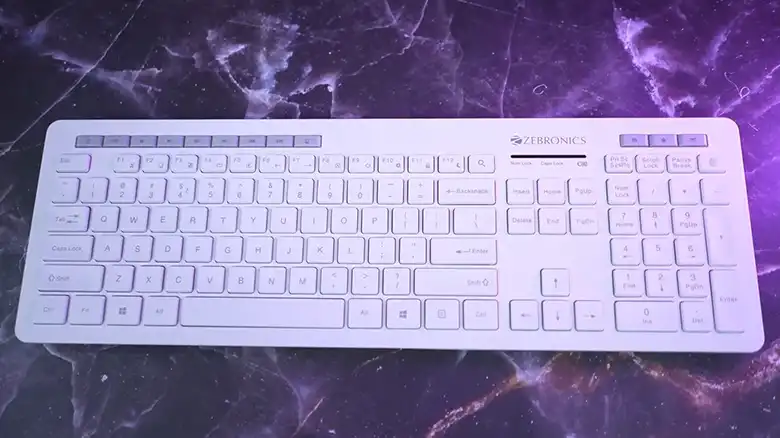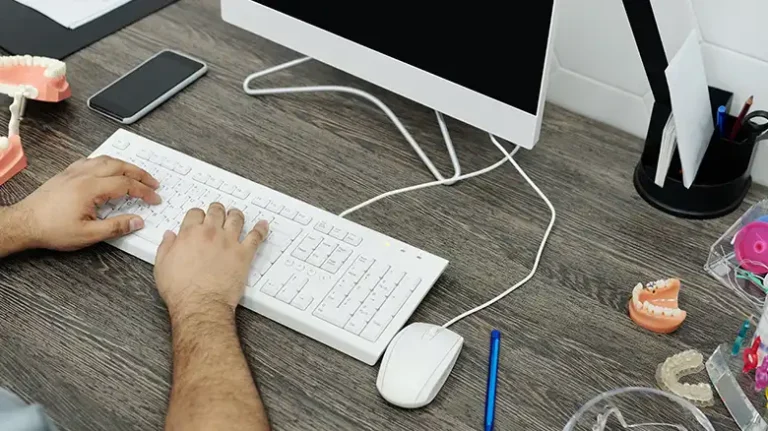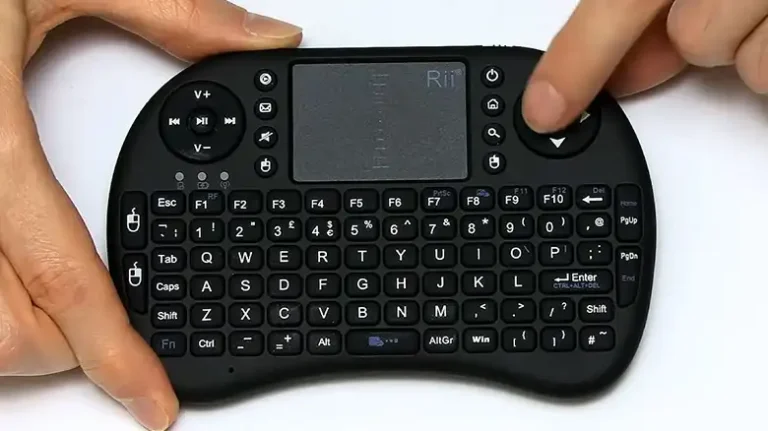How to Turn on Gateway Wireless Keyboard? Steps Guideline
Turning on a wireless keyboard is an easy task since most of the modern keyboard and mouse, as well as other input and output devices, are detected automatically by current versions of Windows. However, vintage keyboards, which were designed for older systems like Windows XP or 98, can be a bit difficult to set up.
So, if you have recently got hold of a Gateway wireless keyboard and can’t turn it on, this article is for you. Here we will explain step-by-step how you can turn on your Gateway wireless keyboard. So, without further ado, let’s start.

Steps for Turning On Gateway Wireless Keyboard
To ensure optimal performance, follow these guidelines during hardware installation:
Receiver Placement
Position the receiver at least 20 cm away from other electrical devices, such as monitors, to achieve the best performance. Avoid placing the receiver on metal surfaces.
Distance Limit
Maintain a distance of no more than 5 feet between the keyboard, mouse, and receiver.
Step 1: Connect the Receiver
- Plug the receiver connector into a USB port on your computer.
- Your system will take approximately 10 seconds to automatically detect your keyboard and mouse.
- Keep your receiver at least 20 cm away from other electrical devices, as their proximity may affect receiver sensitivity.
- Insert two batteries into the battery chamber of your keyboard and another two batteries into the mouse battery chamber.
Note: If your operating system is older, you may need to follow the on-screen instructions to complete the installation of your keyboard and mouse.
Step 2: Insert Batteries
- The mouse requires two alkaline AA batteries.
- Remove the battery compartment cover located on the bottom of the mouse.
- Insert the two alkaline AA batteries into the battery compartment.
- Securely replace the battery compartment cover on the bottom of the mouse.
Note: Use only batteries of the same type for safety.
Inserting Batteries in the Keyboard
- The keyboard also requires two alkaline AA batteries.
- Remove the battery compartment cover on the bottom of the keyboard by pushing it in the direction of the arrow.
- Insert two AA batteries following the illustration inside the battery compartment, ensuring proper placement.
- Close the battery compartment by pushing the locking lug located under the battery compartment.
Note: Do not press the channel setting button on one side of the battery compartment cover, as it may alter the channel or ID settings. This applies to both the mouse and keyboard.
Step 3: Setting Frequency Channel or ID
For a reliable radio connection, configure both the keyboard and mouse to use the same frequency channel and ID. Different IDs prevent interference between the two devices, with a total of 255 available IDs for both keyboard and mouse.
- Press the connection button on the top of the receiver until the indicator starts blinking.
- Press the button on the bottom of the keyboard or mouse. The channel will change once you release the button.
Note: Do not hold the button for more than 3 seconds, as it will change the ID rather than the channel.
Step 3: Setting ID on the Keyboard
- Press the connection button on the top of the receiver until its indicator begins blinking.
- Hold down the button on the bottom of both the keyboard and mouse for 3 seconds. The ID will change upon releasing the button.
That’s it, you should now be able to successfully use your vintage Gateway keyboard.
To Conclude
Since the Gateway keyboard and mouse devices were designed to work with older systems, using them on a modern system can be a bit of a hassle. However, by following the steps that we have mentioned above, you can use your Gateway keyboard with your new system easily. Just remember to use the right kind of battery and set the right frequency.
![[Fixed] Bluetooth Keyboard Not Recognized at Startup Mac](https://keyboardhunter.com/wp-content/uploads/2023/10/Bluetooth-Keyboard-Not-Recognized-at-Startup-on-Mac-768x431.webp)

![[Explained] Why Is My Keyboard Not QWERTY?](https://keyboardhunter.com/wp-content/uploads/2023/10/Why-Is-My-Keyboard-Not-QWERTY-768x431.webp)
![[Fixed] Magic Keyboard Key Stuck Down](https://keyboardhunter.com/wp-content/uploads/2023/09/magic-keyboard-key-stuck-down-768x431.webp)

